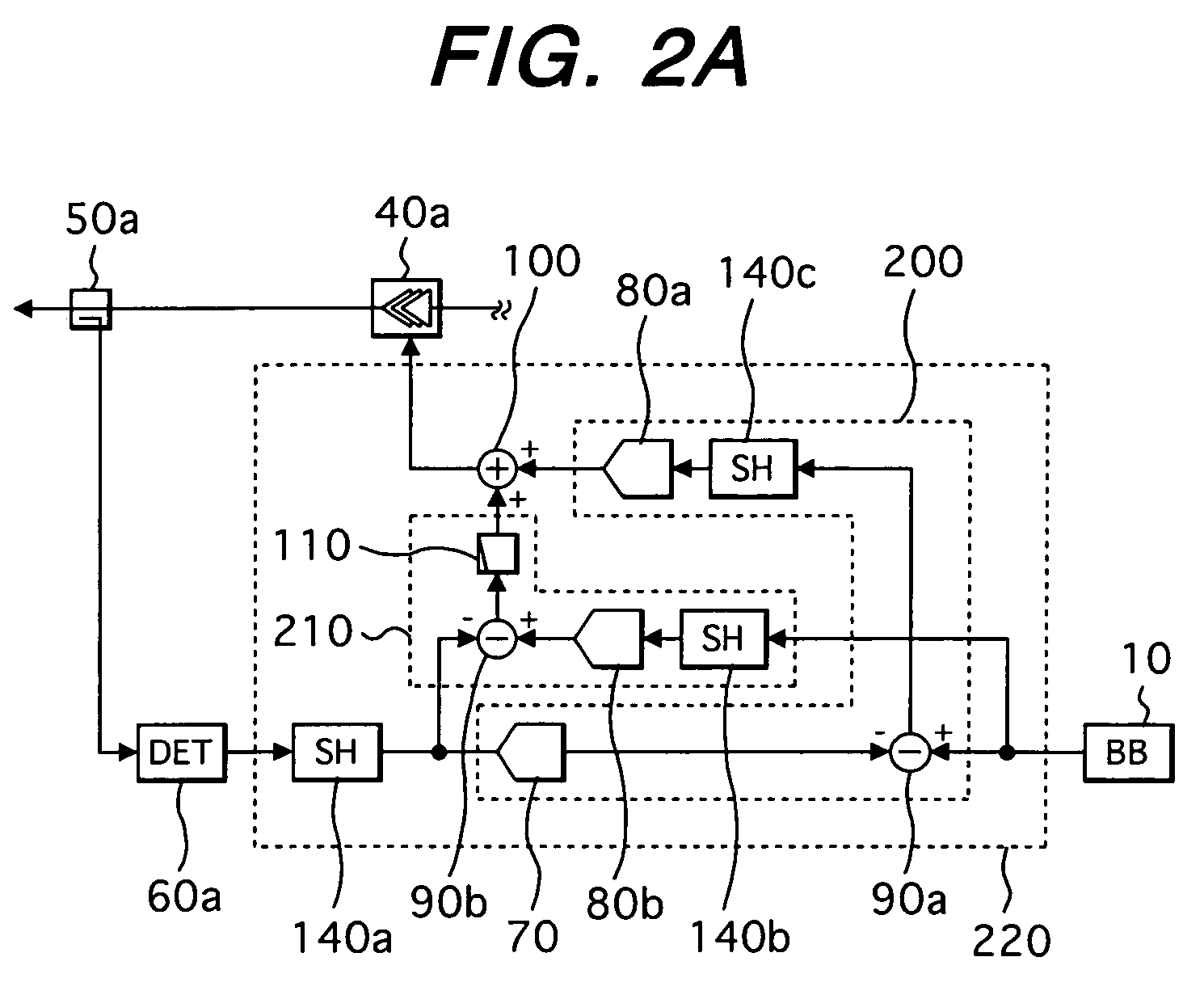Power control circuit, semiconductor device and transceiver circuit using the same
a power control circuit and semiconductor technology, applied in the direction of gain control, digital transmission, baseband system details, etc., can solve the problems of insufficient stability and accuracy, inability to avoid degradation of the output signal of the transmitted power amplifier, and limit to a communication system, so as to reduce the size and cost of the communication device, stable high-speed operation, and the effect of stable high-speed operation
- Summary
- Abstract
- Description
- Claims
- Application Information
AI Technical Summary
Benefits of technology
Problems solved by technology
Method used
Image
Examples
first preferred embodiment
[0043]A first embodiment illustrative of a power control circuit of the present invention is shown in FIG. 1. As one example, a case is indicated, in which the present invention is applied to a cellular phone appropriate to GSM and W-CDMA, in order to simply describe the structure, operation and effects of the power control circuit according to the present embodiment. FIG. 1 is a circuit configuration diagram showing a transmitter block of a cellular phone equipped with the power control circuit according to the present embodiment.
[0044]In FIG. 1, reference numeral 10 indicates a base band signal processor (BB), reference numeral 20a indicates a frequency conversion circuit (MIX), reference numeral 30 indicates an available gain amplifier, reference numeral 40a indicates a power amplifier, reference numeral 50a indicates a directional coupler, reference numeral 60a indicates a detector (DET), reference numeral 70 indicates an analog to digital (A / D) converter, reference numerals 80a...
second preferred embodiment
[0053]A second embodiment illustrative of a power control circuit of the present invention is shown in FIG. 2A. FIG. 2A is a circuit configuration diagram showing a transmitter block of a cellular phone equipped with the power control circuit according to the present embodiment. The cellular phone, to which the present invention is applied, corresponds even to EDGE in addition to GSM and W-CDMA. Thus, the power control circuit according to the present embodiment is applied to GSM and EDGE modes and serves as a multi-mode power control circuit.
[0054]When the transmitter block performs the EDGE mode, its basic operation is similar to the GSM mode in the first embodiment. Points different from the GSM mode will next be explained.
[0055]FIG. 3 is a graph showing time responses of a transmitted signal power value transmitted from an antenna 130a and normalized time masks where GSM and EDGE modes are performed.
[0056]In FIG. 3, the horizontal axis indicates time, and the vertical axis indic...
third preferred embodiment
[0074]A third embodiment illustrative of a power control circuit of the present invention is shown in FIG. 7. FIG. 7 is a circuit configuration diagram showing a transmitter block of a cellular phone equipped with the power control circuit according to the present embodiment. The cellular phone to which the present invention is applied, is adapted to each of GSM, W-CDMA and EDGE in a manner similar to the second embodiment. The power control circuit according to the present embodiment is used where a comparator 90b can be turned OFF during the modulated signal output period 450. Only a sample and hold circuit 140c is disposed on the input side of an A / D converter 80a. Thus, as compared with the second embodiment, the power control circuit 220 is reduced in size by a reduction in the number of sample and hold circuits.
[0075]A basic operation of the power control circuit 220 adapted to GSM and EDGE is similar to the second embodiment but the operation of the sample and hold circuit in...
PUM
 Login to View More
Login to View More Abstract
Description
Claims
Application Information
 Login to View More
Login to View More - R&D
- Intellectual Property
- Life Sciences
- Materials
- Tech Scout
- Unparalleled Data Quality
- Higher Quality Content
- 60% Fewer Hallucinations
Browse by: Latest US Patents, China's latest patents, Technical Efficacy Thesaurus, Application Domain, Technology Topic, Popular Technical Reports.
© 2025 PatSnap. All rights reserved.Legal|Privacy policy|Modern Slavery Act Transparency Statement|Sitemap|About US| Contact US: help@patsnap.com



